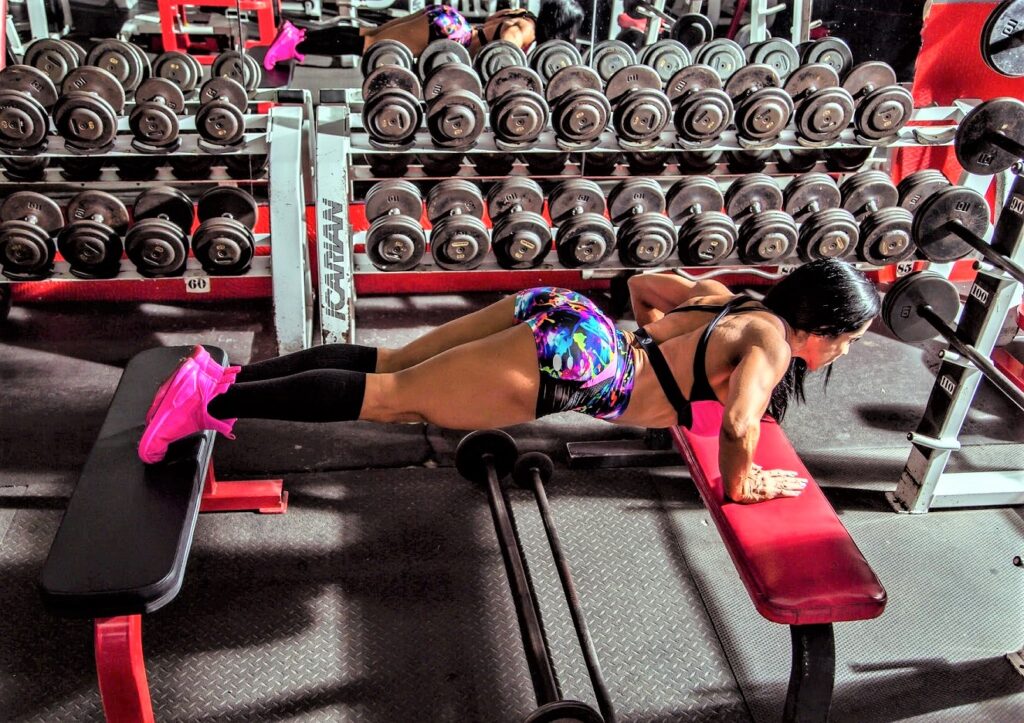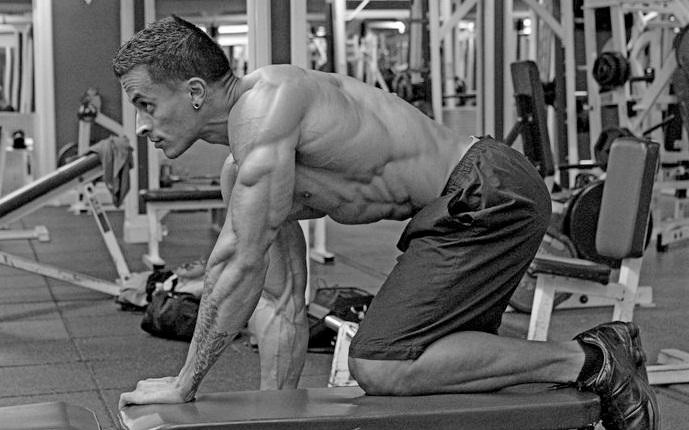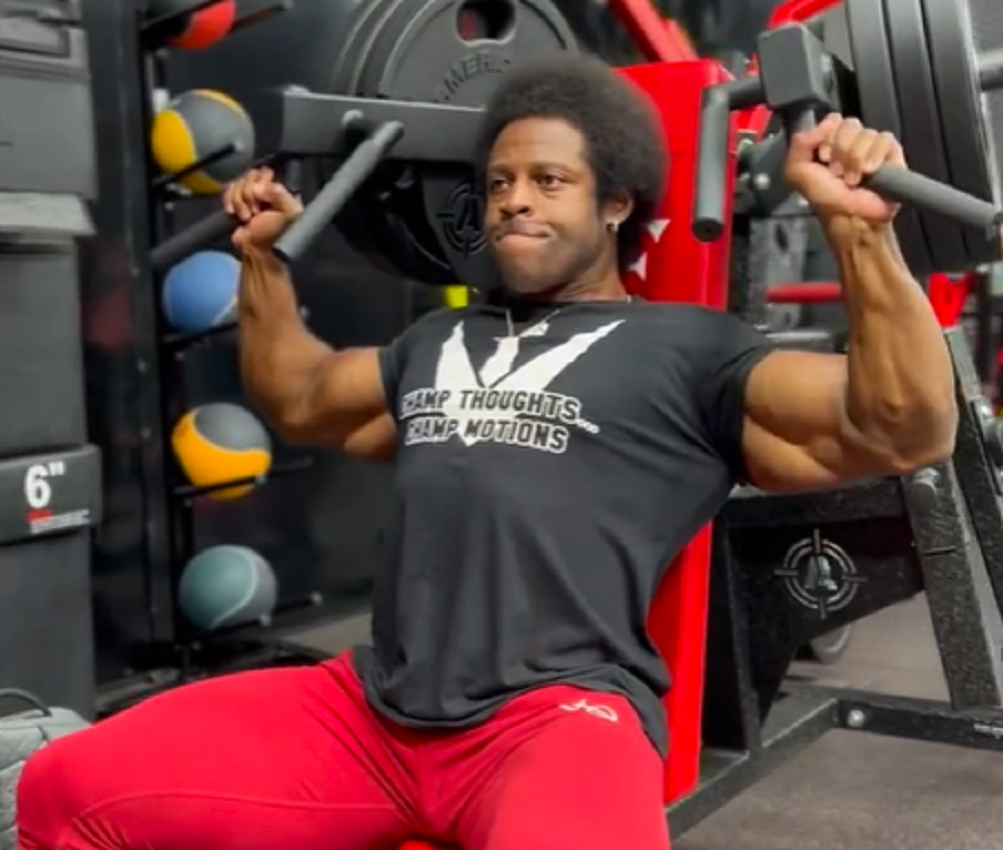2-time Classic Mr. Olympia Breon Ansley shoulder pressing. / Instagram
Does exercise order matter? The simple answer is yes. So then what’s the best exercise order? Here’s the thing about exercise science: Sometimes it debunks gym bro opinions, sometimes it confirms them. And sometimes it supersedes them: Research demonstrates that that thing you’re doing because it feels right or focuses your mind or feeds your ego is actually the most effective way, too. So it is with exercise order. You may already be doing it correctly, but even so, science will tell you to keep doing it that way and how to do it even better.
Let’s see what science says about the best exercise order.

EXERCISE ORDER: FIRST EXERCISES
For decades, the first rule for assembling a routine has been: Prioritize weaknesses by slotting exercises for your weakest muscles or parts of muscles early. For example, if your upper pecs lag your lower pecs (as they almost always do, visually) hit incline presses first on chest day.
Second rule: Do your heaviest, compound exercises early in your routine when your energy and focus are primed.
Both rules are correct, because research shows the earliest exercises in your routine improve the most and are the most effective for strength and muscle gains.
A comprehensive review of workout routine studies concluded that the greatest strength increases were evident in the first exercise performed and lowest strength increases came in the last exercise. Additionally, muscle growth was greater in areas emphasized by the first exercise than in latter exercises.
A recent study focused on six exercises (8-10 reps per set) performed in circuits three times. One group did the six exercises in a particular order, the other group did them in the opposite order. One group made its greatest gains on its first exercise (last for the other group); the other group made its greatest gains on its first two exercises (last two for the other group). So, even in circuit training, where you’re not doing multiple sets of exercises in a row but are going from exercise to exercise in a rotation, exercise order still matters substantially.
The exercise you do first in your workout will experience the greatest strength gains and initiate the greatest muscle gains. Therefore, prioritize. Do the crucial exercises first in each routine.

BEST EXERCISE ORDER
Follow these four principles of exercise order:
1. PRIORITIZE
Prioritizing works, and not just in regards to focus. Schedule your first exercise to stress the muscle(s), areas of muscles, or strength goal you most want to emphasize. For physique symmetry and/or balanced strength, stress your weakness up front.
2. COMPOUND BASICS FIRST
If your goals include getting stronger in lifts like the squat, incline press, and deadlift, the best time to do such compound classics is first in your routine.
3. PUMP-OUT LAST
Conversely, your ability to add progressive resistance will be lowest at the end of your workout. So, this is a bad time for low-rep strength tests and a good time to pump it up. Consider ending a bodypart routine with a set of 20 or more reps to maximize blood volume or extend the work with drop sets.
4. MIX IT UP
What preceded is the best way to do it most of the time, but not necessarily all of the time. Switching it up on occasion will keep your training fresh. Ronnie Coleman alternated between two workouts for each bodypart, so he began one chest routine on an incline bench and the next on a flat or decline bench. If you already have a balanced physique, alternating which exercises you begin workouts with will maintain that balance and may elevate your motivation.
BEST EXERCISE ORDER: FAQS
Does it matter in which order you do exercises?
Yes.
What is the recommended order of exercise?
Focus on your weakest body part or exercises in order to prioritize them. Also, do your heaviest, compound exercises early in your routine when your energy and focus are heightened.
Why is exercise order important?
Your strength and energy wane as the workout progresses, so it’s important to organize your routine to do the most important exercises (those that focus on a weakness and/or the ones that most stress your muscles with heavy weights) early.
Does it matter which muscle or body part you train first?
Yes. Generally, you should train the biggest body part first. So, if you’re training legs, do quads before hamstrings before calves. And if you’re doing a pull workout, do back before biceps before forearms.
Is it better to do cardio or weights first?
This depends on your goals. If you want to maximize fat-burning, do cardio first. If you want to maximize strength and muscle growth, do cardio last. You can also do cardio with weight-training, between sets. We explore the pluses and minuses of each way in this article: Best Time to do Cardio for Optimal Results
Which exercise is best to do first?
After any warm-up sets, it’s generally best to do a basic, compound exercise first. On leg day this would be squats. On chest day, this would be a bench press or incline press.
Should you change the order of your workout?
You don’t have to. But if your training starts to become stale, we recommend switching up the exercise order.
Should I do the hardest exercise first or last?
Generally, first. Though more experienced trainers can experiment with pre-exhausting body parts by doing a compound basic exercise last. For example, 6-time Mr. Olympia Dorian Yates did deadlifts last in his back routine to focus them more on his back and less on his lower body.
















































